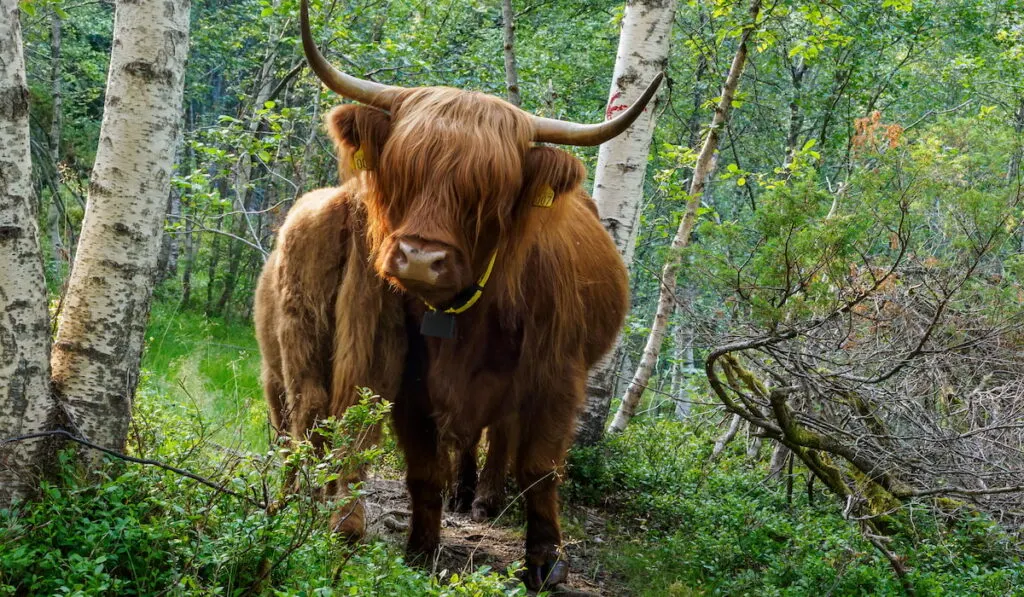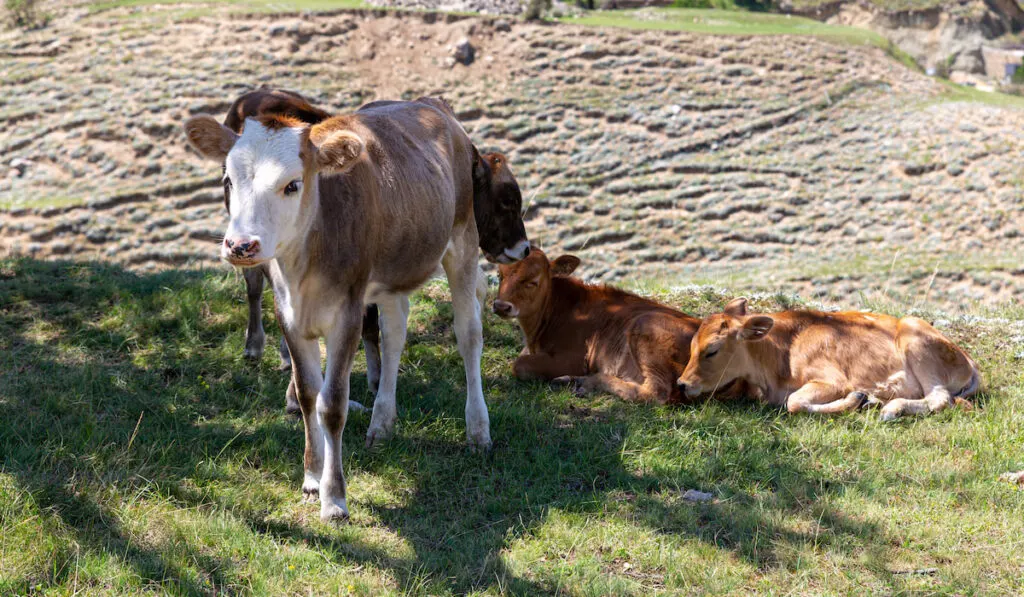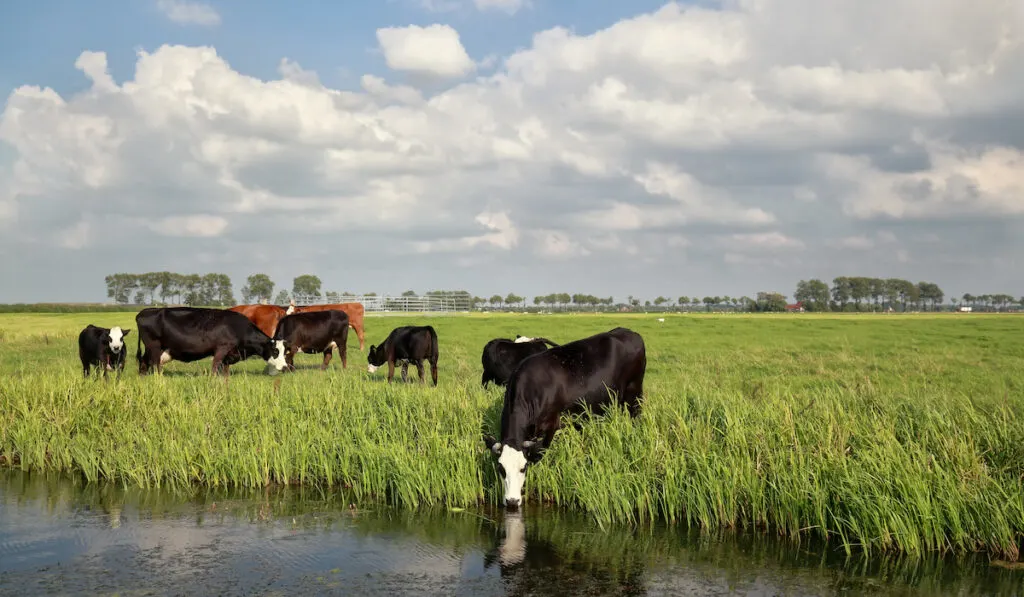Raising cattle is challenging yet highly rewarding, and I wholeheartedly recommend it! There is something very relaxing about raising cattle and watching them graze, grow and thrive on your land.
As fun as raising cattle can be, there are some aspects of the cattle ranching business that are not all sunshine and rainbows. I’m not talking about methane gas either!
One challenge of raising cattle is helping them regulate their body temperature, especially if you live in a hot climate. Understanding this is an important part of keeping your cows healthy.
Do cows sweat?
Cows do sweat, but not enough to keep cool in warmer temperatures. While we sweat all over our bodies to keep ourselves cool, cows can only sweat a small percentage of what we can. Cows must find alternative ways to regulate their body temperatures. Often they need our help to do so.

Unlike horses, cows do not have sweat glands throughout their bodies to help them control their body temperature and avoid overheating. Just like dogs, you may notice cattle panting, since both animals lack the sweat glands we have.
Cows need a little help to keep cool and the more you know about their ability to sweat, or lack thereof, the more you can help.
Table of Contents
How much do cows sweat?
Cows do sweat, but not nearly as much as us humans do. A cow can only sweat about 10 percent as much as we can, which means they cannot regulate their body temperature easily.
Interestingly, cows will sweat from their noses, but you will never see a cow drenched in sweat like a horse that has been recently ridden. Since cows can only sweat a small amount, special considerations have to be taken if you own and raise cattle.
How do cows stay cool?
Cows sweat what little they can to stay cool, but once they begin to feel too hot, they will seek out shady spots to cool off. This means it is essential to provide plenty of shady spots in your pasture to keep your cattle cool in warm temperatures.
If there are no natural shady areas in your pasture, then you will need to put up a shelter or shed.
If your cows are being kept in a barn or shed, you should make sure that there is adequate air flow. This can be provided either naturally though vents and windows or by fans to keep them cool. Stuffy, hot enclosed areas are just as dangerous as open areas that are in direct sunlight. (source)
What is heat stress in cattle?
Heat stress is when a cow becomes so hot it begins to suffer serious and dangerous symptoms. Most often, cows will begin to experience the symptoms of heat stress when temperature reach 80°F or above.
Cows that have thicker coats than normal, are less than a year old, and those that are already sick will suffer from heat stress more quickly than healthy adult cattle.
Heat stress can cause cows to eat less, lose weight, and experience respiratory distress. Heat stress can even cause death if they are unable to cool off quickly. (source)

7 symptoms of heat stress in cattle
While the symptoms of heat stress alone may be indicative of other illnesses, when combined with hot temperatures, heat stress is likely the cause.
You should act quickly if you notice any of these symptoms, especially in young, pregnant or older cattle. Consult a vet if your cow does not recover soon after they are provided shade, water, or a cool bath. (source)
1. Panting that doesn’t subside
2. Drooling
3. Increased respiration
4. Sudden fatigue
5. Unbalanced walking
6. Indifference to food when they should be hungry
7. Breathing with their mouths continuously open
Ways to make sure your cow stays cool during hot weather
There a lot of ways that you can help your cows stay cool during warmer temperatures and prevent heat stress. While most cows will experience small levels of heat stress naturally as outdoor temperatures increase, your goal should be to limit it as much as possible. (source)
Make sure your cows have access to water at all times.

To keep your cows cool, always provide plenty of cool, fresh water for your cows. The water should not be exposed to direct sunlight during hot weather. Keep the tub cleaned out as much as you can to decrease algae buildup.
In warm temperatures, cows can drink a lot of water. be sure to check their water supply daily, or even multiple times a day if it’s very hot. If you have a large herd, consider investing in an automatic waterer to make sure your cows never run out of water.
Provide a shelter or shady area for your herd

Cows need a shady area or a shelter to get under when temperatures rise. When cows get too hot, they will immediately begin looking for areas that are cooler.
These are typically shady areas under trees or in a barn, shed, or other areas that will protect them from the sun. Make sure there is enough shaded area to cover your entire herd comfortably, even when they lay down.
If it is a man-made structure, make sure you build it so it is strong enough to handle snow and high winds since your cows will probably seek shelter there in harsh weather too!
Enclosed areas should be well ventilated

If your cows must be in enclosed barns or other buildings, make sure that there is always enough air flow, especially when it is warm outside. Lack of air flow in an enclosed area can make it just as hot or hotter than outside.
Just think of how quickly cars can heat up on a warm day, and then imagine how quickly an enclosed barn can heat up with a herd of cattle inside it. If you are uncomfortably warm in a barn, so are your cows!
Avoid feeding cows during the hottest part of the day
If you feed your cows in direct sunlight during the hottest parts of the day during warm weather, they will stand in the hot sun while they eat. Also, as they digest their food, their circulation concentrated on their digestive tract, instead of working to cool their skin.
This means your cows may begin to experience heat stress in a short amount of time. This can cause them to eat less because they will want to seek out shady areas when they begin to overheat.
Instead, try to feed your cattle before or after the day’s peak warm temperatures or feed in a shady area.
Avoid moving cattle during hot temperatures

Sometimes you have to move your cattle for farm management, or you may even have working cattle with jobs to do. During the summer months, you should schedule any activity during the coolest parts of the day.
Since cows can’t sweat enough to make a difference, cows will depend on you to keep them cool even when you must work or move them. Working or moving cows during hot temperatures can result in your entire herd suffering from heat stress at the same time.
Final Thoughts
Cows do sweat, but not enough to keep them cool during hot temperatures. Unfortunately, cows can only sweat 1/10th as much as we do, so they experience overheating, or heat stress, much easier than other farm animals.
This means cows need our help to stay cool and comfortable when the temperatures rise. Luckily, now you know how you can help your cows stay cool!
